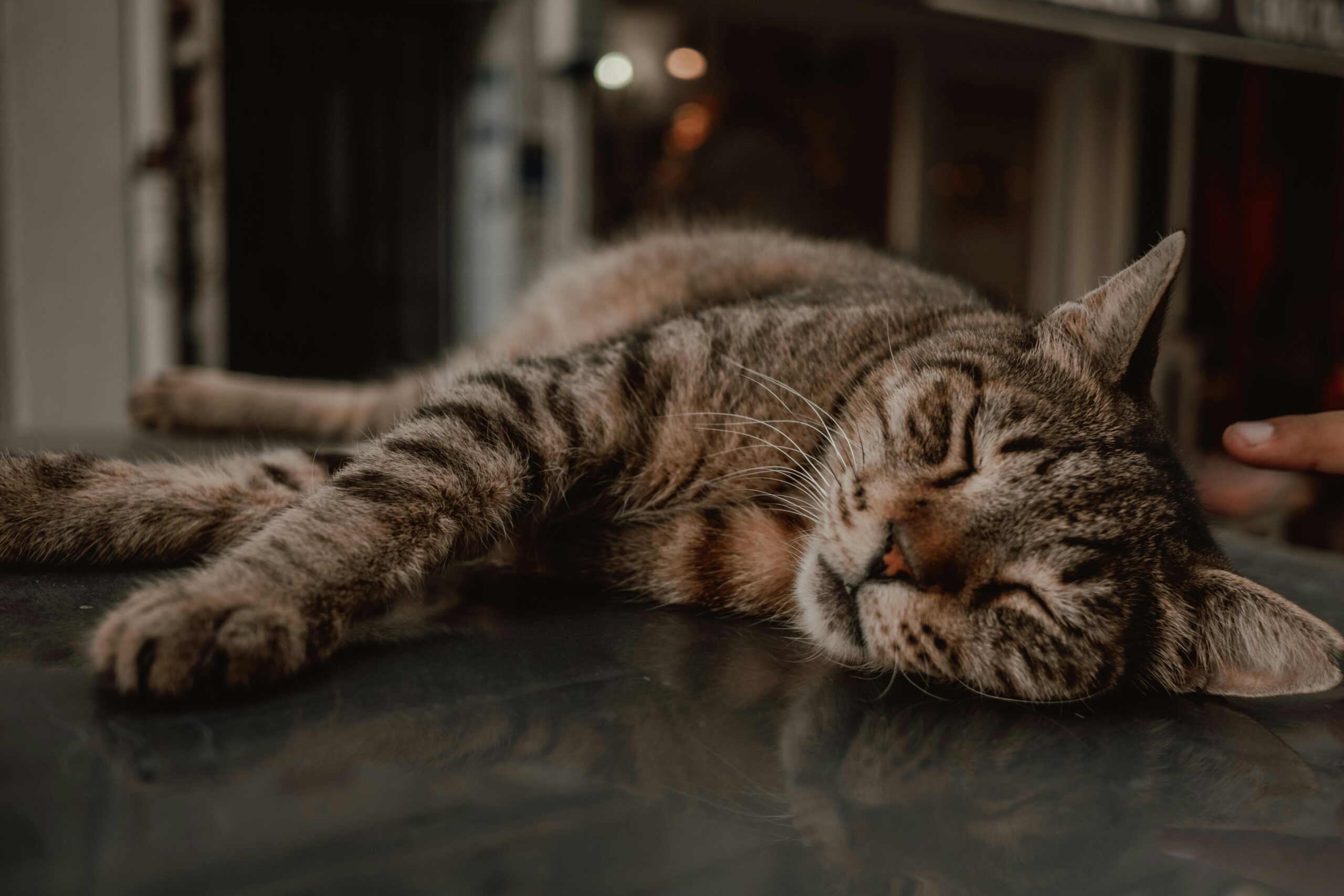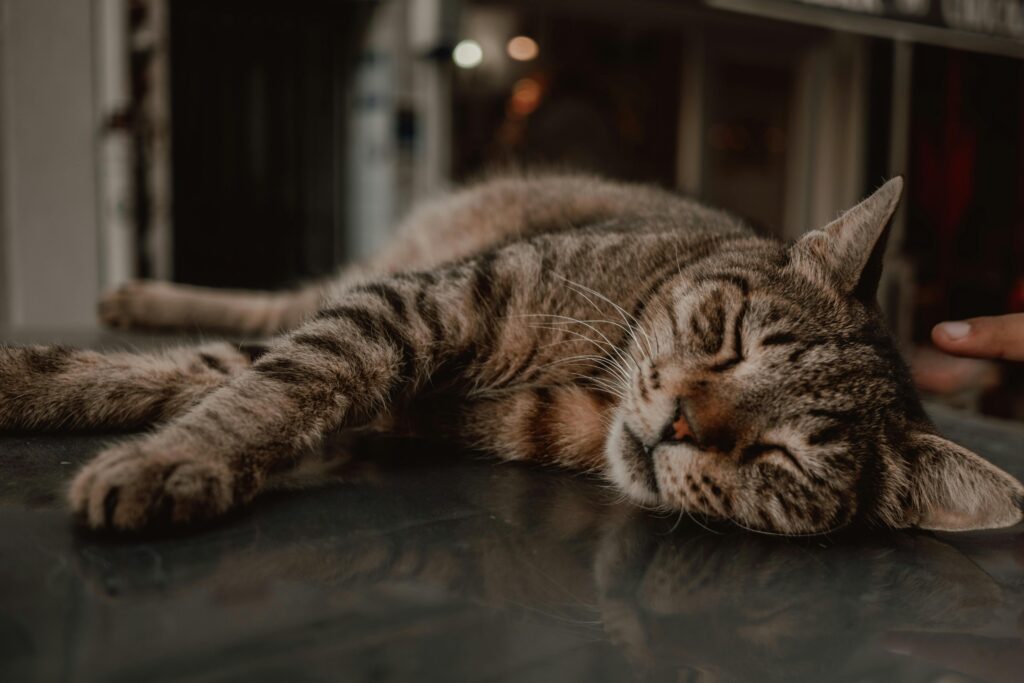Cats, those enigmatic, whiskered friends of ours, have a special way of pulling at our heartstrings. But as much as they seem like masters of emotional control, many cat owners find themselves wondering: Can cats cry? Let’s dive into the intricate world of feline tears and unveil the truth behind this enigma.
The Structure of a Cat’s Eye: A Feline Wonder.
When we think of crying, we often picture tear-filled eyes brimming with emotion. However, the anatomy of a cat’s eye tells a different story. While cats do have tear ducts, these ducts serve primarily to lubricate and protect their eyes rather than express sadness. In fact, a cat’s tear ducts are incredibly efficient at keeping their vision sharp and clear, warding off irritants that may affect their cat-like reflexes. But can these ducts produce tears in the same way humans do when they are emotionally overwhelmed?
Emotional Tears vs. Reflex Tears: Is There a Difference?
Humans produce two types of tears: emotional tears and reflex tears. The former are caused by emotions, while the latter result from irritants like dust or wind. Cats, on the other hand, are not known to produce emotional tears. This doesn’t mean that they are emotionless beings. Cats feel emotions deeply—they can become stressed, anxious, or even depressed. However, when it comes to crying, their tears are purely reflexive.
So if your cat has watery eyes, don’t assume they’re sad. It’s more likely that something in their environment is causing irritation. Common culprits include allergens, foreign objects, or even eye infections.
Why Do Cats Get Watery Eyes? Common Causes of Feline Tears

While cats don’t cry from sadness, they certainly can have watery eyes. Here are some reasons why your kitty’s eyes might be glistening:
- Allergies: Cats, like humans, can also experience allergic reactions. Pollen, dust, and even certain foods can trigger an allergic reaction, leading to watery eyes.
- Conjunctivitis: This inflammation of the conjunctiva (the membrane that covers the front of the eye and lines the inside of the eyelids) is a common reason for watery eyes in cats. Conjunctivitis can be caused by infections, allergens, or irritants.
- Upper Respiratory Infections (URIs): Cats, especially kittens, are prone to URIs, which often result in watery eyes, sneezing, and nasal discharge. These infections are commonly brought about by viruses such as feline herpesvirus or calicivirus.
- Corneal Ulcers: An ulcer on the cornea can cause your cat’s eye to water as a way of protecting the damaged area. This is often accompanied by squinting or sensitivity to light.
- Entropion: This condition occurs when the eyelid rolls inward, causing the eyelashes to irritate the cornea. This can lead to irritation and excessive tearing.
If you notice your cat’s eyes watering frequently, it’s crucial to get them checked out by a vet. Left untreated, some of these conditions can lead to more serious problems, including vision loss.
Do Cats Feel Emotions? Understanding Feline Feelings
Although cats don’t cry emotional tears, they are far from unfeeling. Cats express their emotions in a variety of ways, from purring and rubbing against you to hissing and flattening their ears. But how can you determine if your cat is feeling sad?
Signs of feline sadness or depression include:
- Loss of appetite
- Lethargy or decreased activity
- Hiding or seeking solitude
- Changes in grooming habits (either over-grooming or neglecting grooming)
If your cat exhibits these behaviors, it might be feeling down, and it’s essential to address the underlying cause, whether it’s a change in their environment, loss of a companion, or health issue.
Myth-Busting: Do Cats Cry Out of Loneliness?
There’s a persistent myth that cats cry out of loneliness. While it’s true that some cats cry can become lonely, especially if they’re left alone for long periods, they don’t express this emotion through tears. Instead, a lonely cat might vocalize more, become clingy, or show signs of stress, such as destructive behavior or inappropriate elimination. So, while your cat may be meowing at the window when you leave for work, their eyes won’t be filled with emotional tears.
How Cats Express Grief: The Feline Mourning Process
One of the most poignant moments for any pet owner is seeing their beloved cat go through grief. When a companion animal or human passes away, cats may exhibit signs of mourning, such as:
- Searching for the lost companion
- Increased vocalization
- Loss of interest in play and activities
However, just as with sadness, grief doesn’t manifest in tears for cats. Their grieving process is more subtle, often involving behavioral changes that reflect their internal state.
How to Comfort a Sad or Anxious Cat
If your cat seems sad or anxious, there are several ways you can provide comfort:
- Routine is Key: Cats are creatures of habit. Maintaining a consistent daily routine can help reduce their stress levels.
- Interactive Play: Engaging your cats cry in play helps to boost their mood and can serve as a distraction from their worries.
- Soothing Environment: Creating a peaceful, quiet space with cozy bedding can help your cat feel secure.
- Attention and Affection: Sometimes, all your cat needs is a little extra love and attention to feel better.
When to Worry: Knowing When Your Cat’s Tears Signal a Problem
If your cat’s eyes are watery occasionally, it might be nothing to worry about. However, if the tearing is persistent, accompanied by redness, swelling, or discharge, it’s time to seek veterinary attention. Eye problems can escalate quickly, and it’s always better to be safe than sorry when it comes to your feline friend’s health.
Final Thoughts: The Emotional Lives of Cats
While cats don’t cry in the way we do, their emotional lives are rich and complex. They may not shed tears of sadness, but they feel deeply, express love, and form strong bonds with their humans. Understanding the reasons behind your cat’s watery eyes can help you provide the best care for them, ensuring they stay healthy and happy.
Building a Deeper Bond: How to Connect Emotionally with Your Cat
Cats may have a reputation for being aloof, but beneath that cool exterior lies a wealth of emotions waiting to be unlocked. Unlike dogs, who often wear their hearts on their sleeves (or rather, paws), cats require a more nuanced approach to emotional connection. How can we foster a deeper bond with our feline friends?
- Understanding Body Language: Cats communicate a great deal through their body language. From the flick of their tail to the subtle narrowing of their eyes, every movement has meaning. Learning to read your cat’s cues—whether they’re signaling contentment, curiosity, or discomfort—can bring you closer together. That slow blink they give you? It’s their way of expressing, I trust you.
- Respecting Boundaries: Unlike dogs, who often crave constant attention, cats cry appreciate their personal space. Honoring your cat’s boundaries is essential for building trust. If they retreat to a quiet corner or perch themselves high up on a shelf, allow them that time to recharge. By giving them the freedom to come to you on their terms, you’ll strengthen your bond.
- Creating Rituals Together: Cats thrive on routine, but that doesn’t mean they don’t enjoy a little variety. Establishing daily rituals—whether it’s a morning cuddle session, an afternoon of play, or a special evening treat—can create a sense of security for your cat and reinforce the bond you share. These small moments become the foundation of your relationship, like the way they nuzzle your hand or gently paw at you for attention.
Do Cats Miss Us? Exploring Feline Attachment
It’s a question that tugs at every cat owner’s heart: Do our cats miss us when we’re gone? While cats may not display their affection as openly as dogs, research suggests that they do form deep attachments to their human companions. In fact, studies have shown that cats can experience separation anxiety when left alone for extended periods.
Signs that your cat may miss you include:
- Increased vocalization upon your return
- Behaviors such as constantly following you from room to room.
- Changes in eating habits or litter box use during your absence
Though they may not rush to the door with wagging tails, cats cry are more emotionally attached to us than they often let on. The subtle way they greet you with a soft meow or rub against your leg is their understated way of saying, “I missed you.”
The Healing Power of Purring: How Cats Express Love
One of the most universally recognized signs of a content and happy cat is the sound of purring. But did you know that purring isn’t just a sign of pleasure? Cats may also purr when they’re feeling anxious, in pain, or in need of comfort. This gentle vibration has a soothing effect—not just for the cat, but for us as well.
Purring is often seen as a cat’s way of bonding with their humans, a sound that communicates safety and connection. When your cat cry curls up on your lap and begins to purr, they’re telling you that they feel secure in your presence. It’s a powerful reminder of the bond we share with our feline friends—a bond that transcends words.
How to Comfort a Grieving Cat: When Loss Affects Our Feline Friends
Just like us, cats can grieve the loss of a companion—whether it’s another pet or a beloved human. The signs of grief in cats can be subtle, but they are real. If your cat is mourning a loss, it’s important to offer them extra care and support during this difficult time.
- Be Patient and Understanding: Grief is a process, and just like with humans, it can take time for a cat to adjust to their new reality. Be patient with them, and offer comfort without forcing interaction.
- Maintain a Routine: Stability is key during times of change. Keeping to a consistent routine can help your cat feel more secure as they navigate their grief.
- Offer Extra Love: Whether it’s through gentle petting, soothing words, or simply sitting quietly together, your presence can provide much-needed comfort to a grieving cat. While they may not express their sadness through tears, your support will help them heal.
Conclusion: Cherishing the Silent Emotional World of Cats
Cats may not cry tears of sadness, but that doesn’t make their emotions any less profound. From the soft rumble of a purr to the subtle flick of a tail, our feline companions communicate in ways that require attentiveness, patience, and empathy. By learning to read the quiet signals they send us, we can deepen our connection with them, creating a bond that is rooted in mutual trust and love.
In the end, while we may never see our cats cry, their emotional depth is undeniable. It’s in the way they curl up beside us after a long day, or greet us with that soft, knowing gaze. And while they may not shed tears, their love for us is as real and powerful as any human bond.



